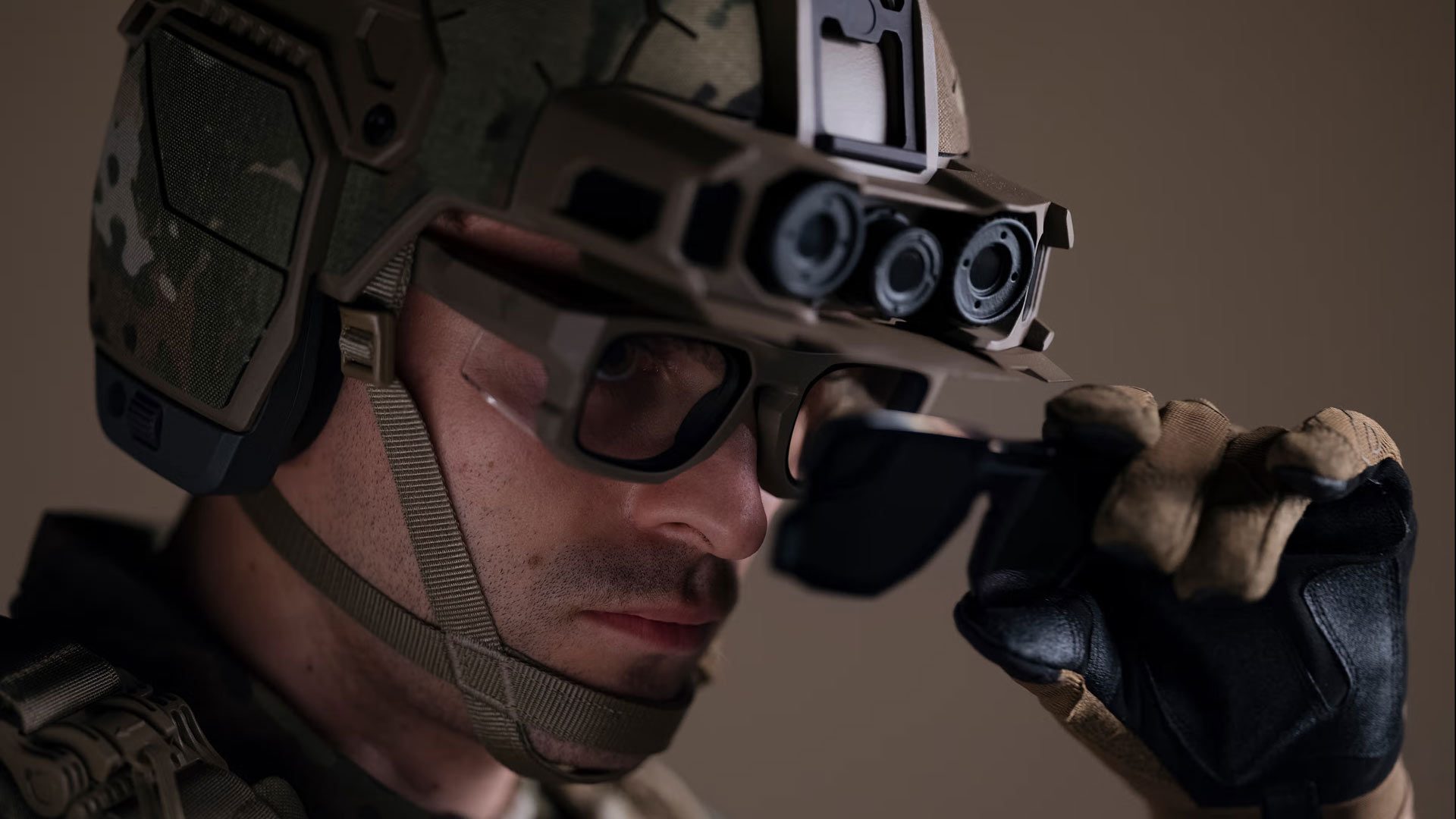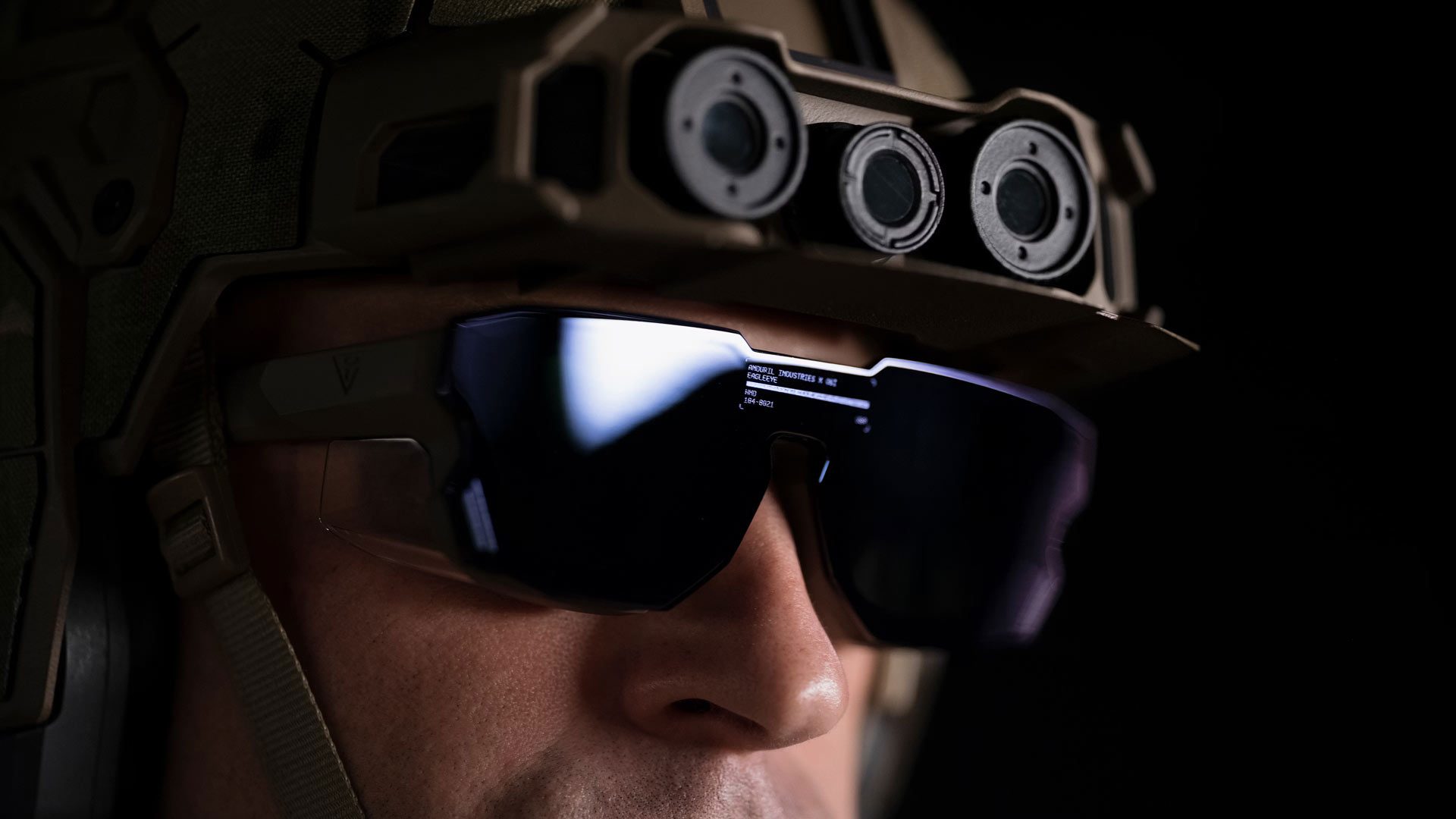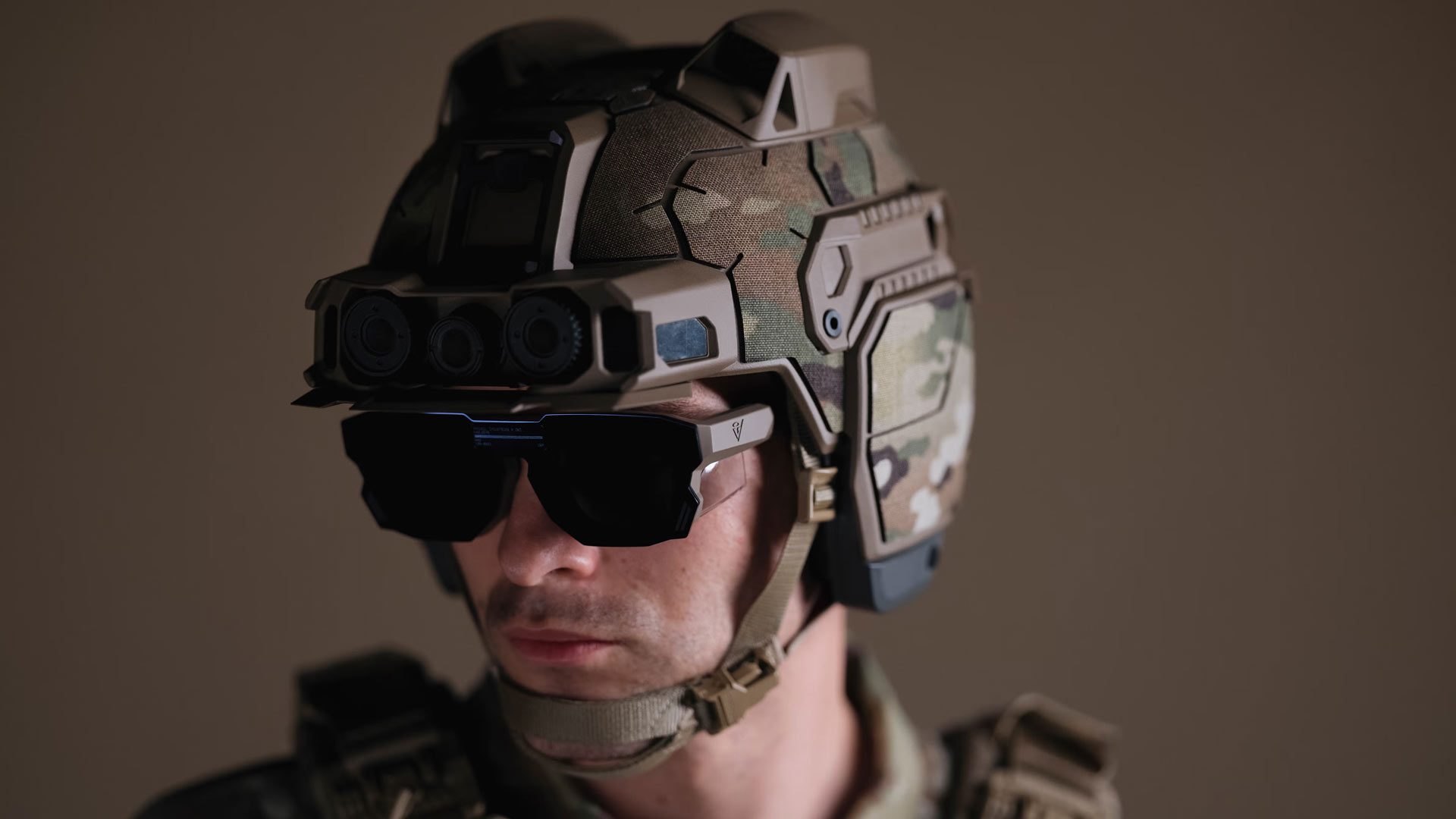Anduril, Palmer Luckey’s military tech company, unveiled EagleEye, its XR headset system built in collaboration with Meta.
The News
Anduril announced in May it was partnering with Meta to build XR systems for soldiers, which the companies said would aim to deliver “the world’s best AR and VR systems for the US military.”
Now, the company has unveiled the EagleEye hardware and given a first look at ostensibly a behind-the-lens view.
In a video released on X, Anduril shows off various systems, which stich in a variety of information into the soldier’s AR display, including a heads-up mini-map, the ability to switch between Low Light and Thermal displays, an overhead drone shot, and AI-driven tracking markers to keep friendlies clearly visible, even when obscured behind objects.
See before you’re seen.
EagleEye enhances the warfighter’s perception by overlaying digital information onto the real world, delivering vital real-time insights. pic.twitter.com/Yl0tmlhHzd
— Anduril Industries (@anduriltech) October 13, 2025
In the past, the company has maintained a fairly rigid “no CGI” policy in marketing images and videos. We’ve reached out to Anduril to confirm whether the video above was captured in-headset, and will update when we know more.
Anduril also unveiled some of the hardware used to drive those interactions, which appears to be a pair of AR glasses with optional shroud, which may be used in brighter conditions to compensate for the device’s light throughput.

Anduril says EagleEye provides “enhanced perception, lethal connectivity, and heightened survivability” by combining a number of information streams from its Lattice battlefield platform, such as RF signature detection, rearview cameras, non-emissive lasers, biometric and environmental sensors, and real-time battlefield alerts.
This comes as Anduril is reportedly set to compete for a U.S. Army contract against defense company Rivet, which seeks to revamp the previous Integrated Visual Augmentation System (IVAS) project originally awarded to Microsoft in 2018.
Microsoft attempted to produce a combat-ready AR headset based on HoloLens 2 capable of fulfilling the $22 billion, 10-year production deal, but was plagued with usability and comfort issues.
My Take
Provided the video is a behind-the-lens capture, it comes as no real surprise to me that EagleEye’s UI looks like it was plucked straight out of modern shooters. And I think that serves an important dual purpose.
Over the years, games have been able to imagine and evolve useful UI conventions and apply them broadly, making them not only more mature control schemes worthy of copying, but also ones that many of today’s soldiers already recognize.
You probably don’t need to teach most 20-something guys how to keep an eye on a mini-map while toggling through waypoints, different modes and data sources—it’s knowledge most (if not all) aspirational soldiers implicitly understand as a core skillset of games like COD or Battlefield.

And in the same breath, military contractors don’t need to reinvent the wheel. For example, the U.S. Department of War (ex-Department of Defense) has undoubtedly racked their brains on different control schemes for a variety of combat roles—drones, ship periscopes, ordinance robots, the list goes on—many of which actually rely on gamepads for input.
Food for thought: for all of its technical wonders, I don’t think this stops at soldiers wearing decked-out AR glasses. The same systems Silicon Valley defense startups are building today could one day be the basis of telepresence robots operated by soldiers sitting in air conditioned bases stateside, much like drone operators do currently.
That’s the anthropocentric view at least. A decidedly more frightening reality could involve, for the lack of a better word, autonomous robot soldiers, which isn’t far off from some of Anduril’s current projects, which includes autonomous fighter jets (Fury) and autonomous submarines (Dive-XL). I’ll leave the comparisons to Skynet for commenters below.
,
